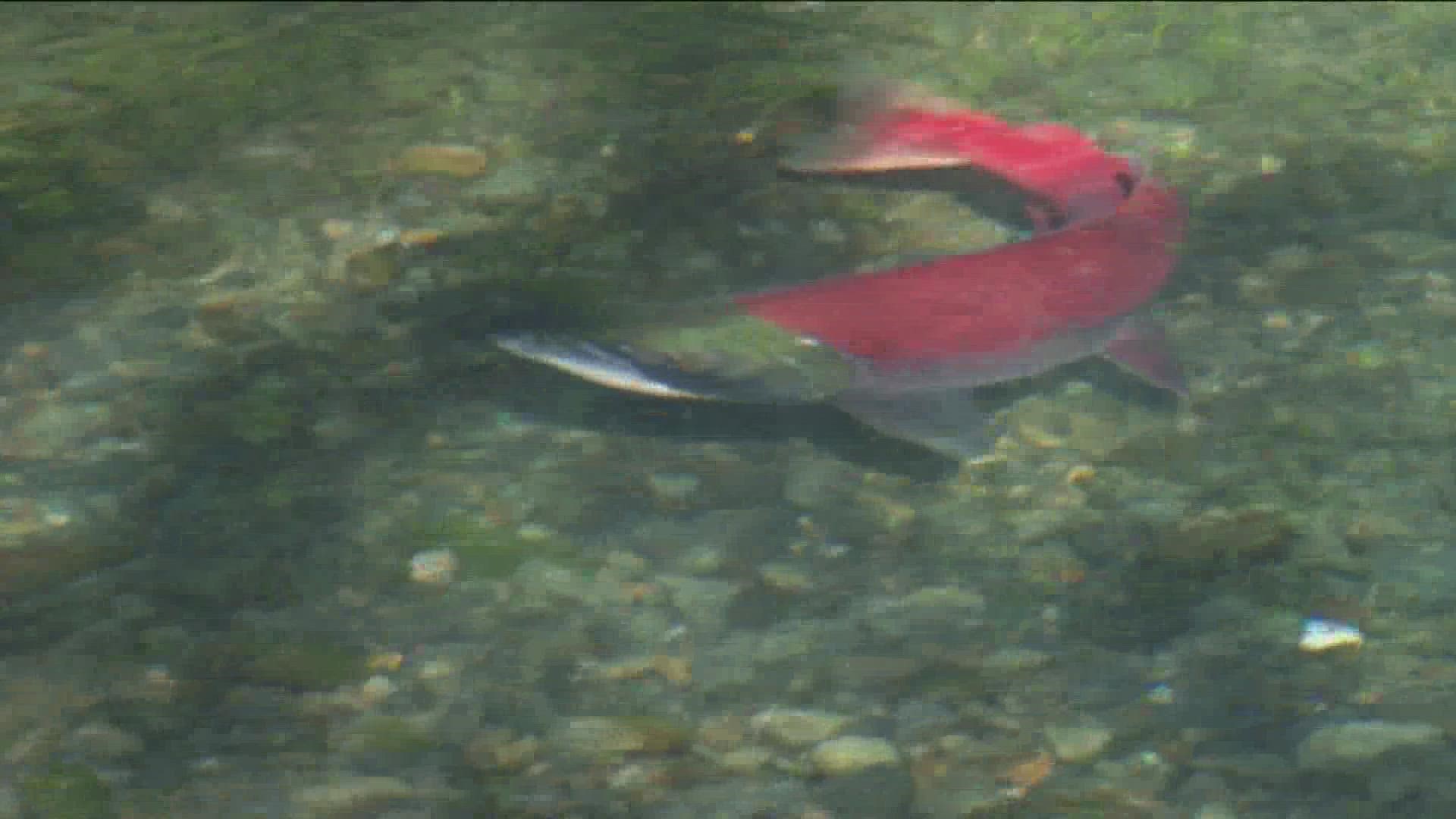BOISE, Idaho — Idaho Fish and Game say early counts of sockeyes on the Columbia and Snake Rivers show promise for a larger return this year.
Through July 10th, 584 sockeye have crossed the Lower Granite Dam, located just 30 miles downstream from Lewiston. Those numbers nearly double the 10-year average for that date, with even more fish expected to cross in the coming weeks.
Lower Granite is the last dam of eight that the fish cross in their migration to the Sawtooth Basin near Stanley, nearly 900 miles with a vertical climb of 6,250 feet. After crossing the dam, there are still another 450 miles for the fish to travel.
During normal summer river conditions, Biologists estimate about 50 to 60 percent of the sockeye that cross Lower Granite Dam will eventually reach the Sawtooth Basin. The 10-year average return to the Sawtooth Basin is 350 fish, which includes sockeye that were transported from Lower Granite Dam in 2015 and 2021.
Biologists said the higher percentage of fish returning from the Springfield Hatchery is encouraging. The hatchery is used solely to raise young sockeye for release into the headwaters of the Salmon River, before migrating to the ocean.
This year could mark the highest return of adult sockeye from the hatchery since it was converted n 2013 to sockeye production.
Chinook returns have improved in Idaho as well, with this year being the first in several years that Idaho anglers will be able to fish for Chinook in all rivers that traditionally provided them.
According to IDFG, part of the reason for the rebound is due to improved ocean conditions necessary for the fish's survival.
Though the number of sockeye crossing Lower Granite Dam is encouraging, the fish still have 450 miles between them and the end of their journey. The remainder of the journey may be hampered by factors such as, low water in following rivers and warm temperatures that can slow their progress.
Only 55 salmon made the entire migration last year due to an unusually hot June, which spiked river temperatures to dangerous levels for the fish.
"From a genetic perspective, sockeye that migrate all the way back to the Sawtooth Basin have a level of fitness that we want in our captive breeding program," said Lance Hebdon, Fisheries Bureau Chief.
There are also sockeye that are raised from egg to adult in hatcheries that serve as an insurance policy if none, or few, adults naturally return from the ocean.
According to IDFG, having natural and captive salmon means biologists can spawn, raise and send more young fish to the ocean, and if conditions are in their favor, welcome back hundreds, or potentially thousands, of adults from the ocean.
In order to thrive, all of Idaho's salmon need good rearing and migration conditions in Idaho's lakes and rivers, adequate food in the ocean, and cool rivers for their return to Idaho. When all three are available, the fish have repeatedly shown they are capable of bouncing back and returning in higher numbers.
Watch more Local News:
See the latest news from around the Treasure Valley and the Gem State in our YouTube playlist:

